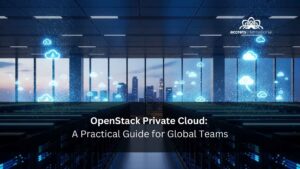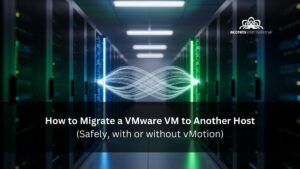If you are searching for MSP Singapore, here is the short answer. An MSP in Singapore should prove clear SLAs with recent delivery data, transparent pricing with what is included and what is extra, security and compliance aligned to PDPA and sector rules, and a 30 day onboarding plan that shows discovery, patch baselines, and a DR drill. We will walk through a scoring rubric, local considerations, and a checklist you can copy. Let us read this together until the end so you can shortlist with confidence.
Table of Contents
ToggleTL;DR: What Singapore firms should check before shortlisting an MSP
If you are time pressed, evaluate five areas: fit, pricing model, SLA outcomes, security and compliance, and onboarding.
- Fit: Does the MSP support your seat count, locations, and industry. Singapore’s public sector push shows how fast requirements shift, see how agencies approach change in this overview of Singapore’s government digital transformation.
- Pricing model: Expect a per user or per device baseline, plus add ons for EDR or MDM or backup and after hours coverage.
- SLA outcomes: Ask for recent MTTR and CSAT trends, not only contractual targets.
- Security and compliance: Confirm PDPA controls, a reachable DPO, and sector standards such as MAS TRM for finance.
- Onboarding: Insist on a day 0 to day 30 plan with discovery, patch baselines, and a DR drill.
MSP vs. other operating models in Singapore
MSPs are one option among in house, outsourced, cloud only, and co managed hybrids. For fundamentals, these primers on what is IT outsourcing services and what is IT infrastructure management services help map responsibilities between your team, vendors, and cloud providers. Many mid market firms here choose co managed for governance and continuity while leveraging an MSP’s tooling and 24 or 7 coverage.
When not to choose an MSP: very small environments with simple SaaS stacks, or highly bespoke on premises workloads where a specialist systems integrator with time boxed services fits better.
A quick self assessment for SG SMEs and mid market
Use this eight question list to decide if you need co managed or fully managed support:
- Users and devices today and the 12 month forecast
- Number of sites including Malaysia, Indonesia, Thailand and after hours needs
- Compliance drivers such as PDPA, MAS TRM, healthcare, education
- Current ticket volume and outage pain points
- Cloud posture covering Microsoft 365, Azure, private or hybrid
- Security stack in place covering EDR, MDM, identity, email security
- Backup or DR RPO or RTO targets and last DR drill date
- Internal capabilities to own architecture and governance
If your answers skew toward growth, compliance, and 24 or 7 support, you likely need an MSP with strong governance. For deeper planning, this blueprint for corporate IT infrastructure in Singapore helps when discussing seat growth, device lifecycles, and refresh cadence.
A transparent scoring rubric with weights
To compare providers, score each on a 100 point scale using these weights:
- SLA outcomes 25 percent: recent mean time to respond and mean time to restore by priority, 24 or 7 on call coverage, after hours response
- Security posture 25 percent: stack transparency such as EDR and MDM, patch compliance, Microsoft 365 hardening, backup immutability, incident playbooks
- Customer evidence 20 percent: named case studies, third party reviews, references, measurable outcomes
- Tooling and reporting transparency 15 percent: PSA or RMM stack, monthly service report samples, access to dashboards
- Price clarity 15 percent: ranges by seat tier, inclusions and exclusions, add on rates
For security evaluation depth across ASEAN, this overview of cloud security consulting in Southeast Asia is a helpful companion.
What MSP pricing looks like in Singapore, honest ranges and add ons
Every environment is different, but most Singapore buyers will encounter a structure like this:
- Per user baseline: typically covers help desk, endpoint management and patching, AV or EDR, basic Microsoft 365 administration, reporting
- Per device or server adders: for servers, network gear, or specialised equipment
- Add ons: MDM for mobile, MDR or SOC, advanced email security, backup or DR with immutability, extended after hours, on site support
- Patterns: smaller teams pay more per user but less in absolute terms, larger teams see lower per user rates yet higher add on line items
When you scope backup and disaster recovery specifically, this guide to cloud computing service providers in Singapore for backup and disaster recovery explains cost drivers such as storage class, region, immutability, and test frequency. Build your comparison on total cost over 12 to 36 months and include change windows and growth.
SLA that actually protects you, response, restore and on call specifics
SLA language can be vague. Be precise and ask for both targets and delivered performance:
- Priority definitions: P1 business stopping, P2 high impact, P3 degraded or minor
- Targets to request: first response such as P1 15 to 30 minutes, P2 1 hour, time to restore such as P1 2 to 4 hours depending on scope, and service credits for misses
- After hours coverage: is 24 or 7 included or pay per incident, what about weekends and public holidays
- Escalation ladder: L1 to L2 or L3 to vendor, ask for named roles and an org chart
- Evidence: a 90 day trend line for MTTR and CSAT by priority
If you need a primer on tickets, queues, and on call expectations, this business IT support in Singapore field guide offers useful background.
Security, compliance and sovereignty in SG, PDPA, IMDA or CSA, MAS TRM
A credible MSP in Singapore should demonstrate:
- PDPA alignment: data classification, retention and deletion processes, and a reachable Data Protection Officer
- CSA or IMDA alignment: such as Cyber Essentials or Plus, secure software and patch practices, guidance for SMEs
- Sector specifics: MAS TRM expectations for financial institutions, healthcare norms for medical data, safe handling of personal data and logs
- Sovereignty: where your logs, backups, and telemetry live, regional failover, lawful access considerations
For a financial services lens, see cloud banking solutions in Singapore and Southeast Asia and this note on accelerating digital transformation in banking, both helpful for due diligence questions.
Tooling transparency, PSA or RMM stack, EDR or MDM, Microsoft 365 hardening
How an MSP delivers outcomes matters as much as what it promises. Ask for:
- Named stack: PSA for ticketing and SLAs, RMM for endpoint and patching, EDR, MDM, email security, backup platform, identity
- Reporting examples: monthly service report such as ticket volume, SLA hits, patch compliance, vulnerability status, asset inventory
- Baselines: Microsoft 365 hardening aligned to CIS controls, device encryption and key management, least privilege admin
If you are re evaluating your platform choices, this look at VMware alternatives helps with trade offs.
Onboarding day 0 to 30, what good looks like
Expect a timeline and checklist, not only a handshake. A strong plan usually includes:
- Day 0 to 7: access, asset discovery, agent deployment, identity review, MFA rollout plan, ticket taxonomy alignment, known issues capture
- Day 8 to 21: patch baselines and ring strategy, EDR tuning, backup policy with immutability, one tabletop DR drill
- Day 22 to 30: handover of runbooks, escalation paths, and monthly reporting cadence, agree on change windows and maintenance nights
Tie onboarding to capacity and growth. If you are forecasting spikes such as seasonal retail or student enrolment, this guide on IT infrastructure capacity planning helps the MSP right size thresholds and monitoring.
Data residency and data centre choices, uptime, latency and compliance
Where your workloads and logs live has latency and compliance impacts. For Singapore workloads with ASEAN users, many teams target SG primary with regional DR. Know your data centre tiering:
- Tier 3 is a common baseline for business uptime, learn the definitions in this Tier 3 data center definition
- Mission critical systems may consider Tier 4 or Tier 5 designs for redundancy, review the Tier 4 data center and Tier 5 data center explainers for the differences
If you must reach users in mainland China from Singapore, plan explicitly for cross border performance and legal routing. We include one connectivity approach in the closing resources.
Choosing the right cloud operating model in SG, IaaS, PaaS, private and hybrid
Your MSP should be fluent across models and clear on trade offs:
- IaaS: best when you need control of VMs, networks, and security tools. See the advantages of infrastructure as a service
- PaaS: faster development and scaling with managed services, read the difference between platform and infrastructure as a service
- Private cloud: residency, performance isolation, and predictable cost, this overview of what are private cloud hosting services and why businesses prefer them in 2025 frames when it outperforms public
- Hybrid: keep some workloads on premises or private for governance or latency and burst into public cloud as needed, see hybrid cloud providers in Singapore
If you are automating deployments, compare infrastructure as code vs infrastructure as a service and survey infrastructure as a service vendors to avoid early tool lock in.
Procurement toolkit, comparison table and due diligence questions
Create a side by side table with these columns, SLA first response and restore targets, after hours coverage, security attestations such as ISO 27001 and SOC 2, Microsoft Solutions Partner status, local headcount, minimum seat count, and named references.
Ask these ten questions:
- Show your last 90 day MTTR and CSAT by priority
- What is included in the per user fee and what is extra
- Which PSA, RMM, EDR, backup, and MDM do you run and who owns the licences
- Where do our logs and backups live and how is immutability enforced
- What are our RPO or RTO targets and drill cadence
- What is your after hours model for Singapore public holidays
- Who is our CSM and what is the escalation ladder
- How will you onboard us in 30 days, show the plan
- Can you provide three Singapore references in our industry
- What is the exit plan and data portability approach
Operating across the region. This overview of ASEAN digital transformation provides a macro lens for planning scale and compliance across borders.
Conclusion
Selecting an MSP in Singapore is about measured outcomes and operating clarity. Use the rubric in this guide, SLAs, security posture, customer evidence, tooling transparency, and price clarity, to compare apples to apples. Ask for 90 day SLA evidence, verify PDPA, MAS TRM and CSA alignment, and insist on a 30 day onboarding plan with a DR drill. If you are methodical about these basics, you will get fewer surprises and a partner who scales with you.
Where to go next, optional vendor resource
If you would like a Singapore based expert to walk you through a scorecard and right sized architecture for your environment, fill the form to connect with an Accrets Cloud Expert for MSP Singapore on the contact page. From there you can explore managed IT services, managed cloud services and why Accrets, cloud infrastructure as a service, DR as a Service, managed backup services, on premise private cloud, enterprise connectivity including Teridion cross border connectivity for China, Microsoft 365 and collaboration tools and online collaboration tools, SAP Business One, cloud service broker, implementation services, and downloadable solution brochures.
Dandy Pradana is an Digital Marketer and tech enthusiast focused on driving digital growth through smart infrastructure and automation. Aligned with Accrets’ mission, he bridges marketing strategy and cloud technology to help businesses scale securely and efficiently.




